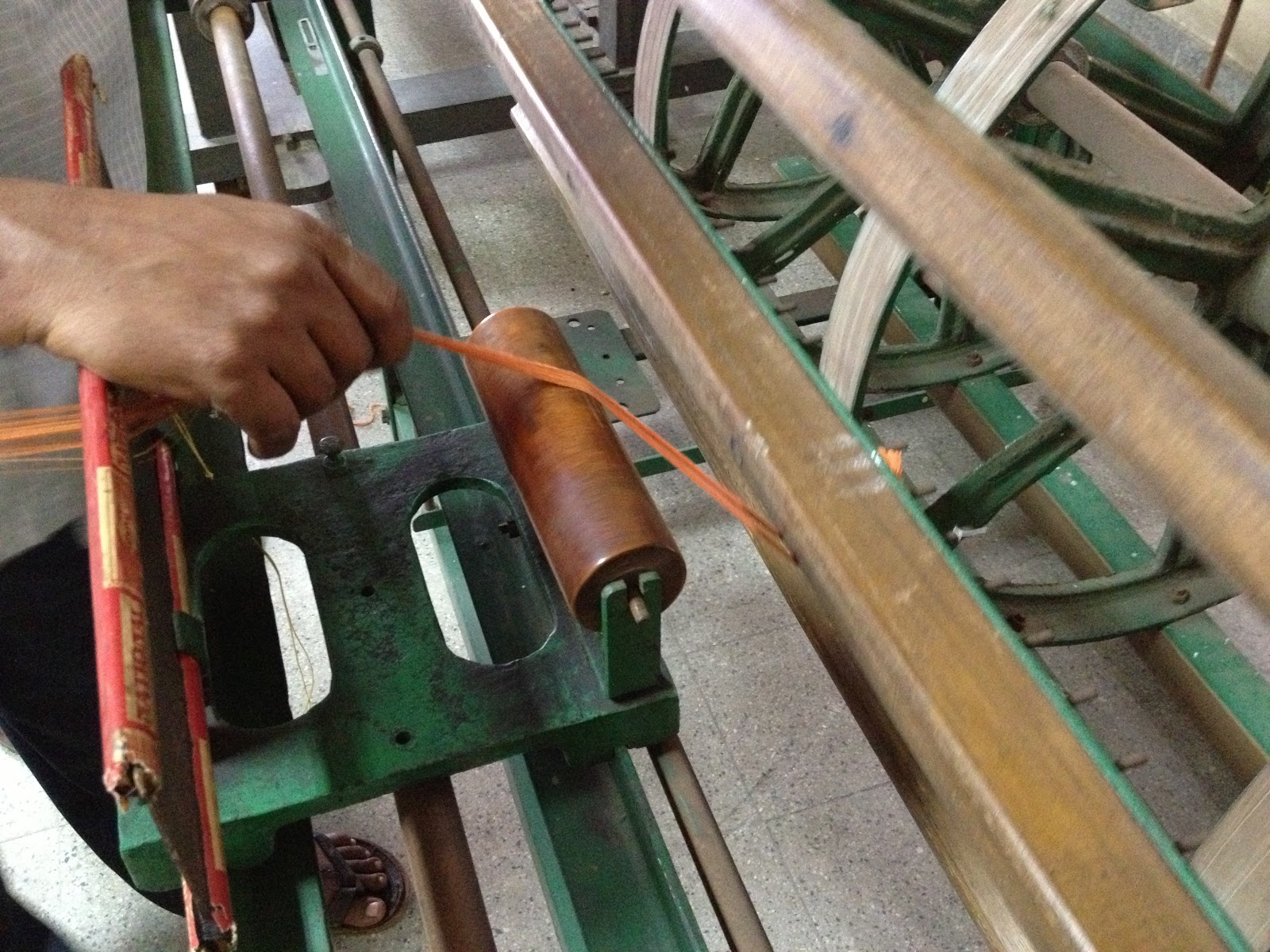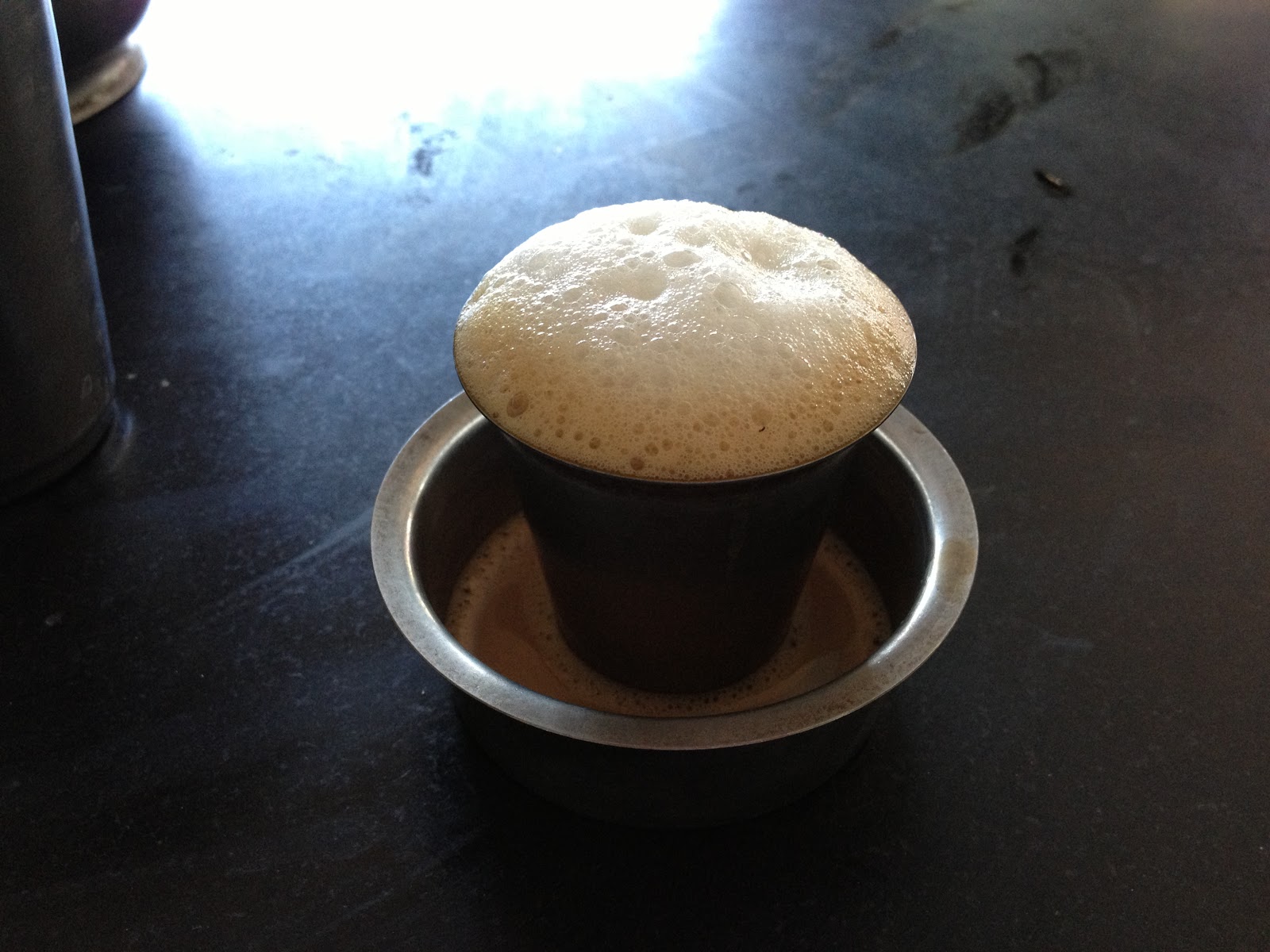After my return from Chennai, Mr Vijayan was back at work and able to spend some time with me. He was limping a little, but had been asked by the DD, Mr Sunderlal, to make sure that I spent as much time as I wanted learning from the weavers before my departure. With that directive, it was a very good week.
For my last week at the Weavers' Service Centre, I asked my teacher if I could skip ahead in the training to the point where I could actually weave a piece of fabric, and he agreed that we could make it happen. We reviewed my workbook, and determined that I had actually reached the point where we could talk about costing (brought back memories of manufacturing costing exercises), and then I could work with the weavers to prepare the sample loom for a small piece of cloth using left-over cotton thread.
In order to begin weaving, we had to prepare bobbins for loading thread onto the warp beam.
The equipment at the Weavers' Service Centre is very sturdy, and probably more robust than most weavers would have at their homes. The thread is organized very carefully to allow the threads to be loaded onto the warp beam without creating tangles.
After a few hours, we had a warp beam with the warp threads ready to be loaded onto the loom.
On my last morning at the BWSC, I learned some of the practical art of weaving (which necessitated quite a bit of rework), and managed to produce a sample cloth, demonstrating a number of different weaves.
All in all, a very rewarding and informative time, and even better than I had hoped for.

















































